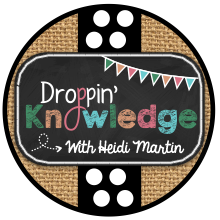Student engagement is one vital puzzle piece in enhancing the education of the individual child. Educators need to seize those moments of engagement and, within a stimulating and well-planned learning environment, address the development of the child’s ability to think critically.
Developing a child’s ability to think critically and problem solve in a variety of situations must be recognized as a life long journey, beginning very early in life. Whole Brain Teaching theory and practice acknowledges that and offers an intense program leading to increased student engagement and ultimately higher levels of critical thinking skills.
Two specific techniques offered to teachers by WBT for critical thinking development is the use of oral and written language within informal and formal settings. The traditional classroom has accepted the quick question and simple one word answers as satisfactory. Unfortunately, answers as such stop there and never call upon the child to support the given answer. Welcome the Cosmic Genius Ladder courtesy of Coach Chris Biffle and Whole Brain Teaching! (WBT Video Library #538) In this arena, students are taught and given continuous practice in answering questions individually and in “choral” with the class, with complete sentence answers beginning with the subject addressed and the answer to the question.

For example, “Why did Bob go home after the ballgame?” “After the ballgame, Bob went home.”
The next level is Critical Thinking. Using the same method of question and answer, the student/class extends the answer with evidence.
“TO THINK CRITICALLY YOU MUST TELL
STRONG EVIDENCE FROM WEAK
EVIDENCE, WHICH MEANS YOU HAVE TO
THINK CRITICALLY ABOUT YOUR CRITICAL
THINKING!” Chris Biffle

“Bob went home after the ballgame because (Pitty-Pat Clapper) he wanted to.” This answer is an example of weak evidence.
“Bob went home after the ballgame because (Because Clapper) he had to finish his math homework for school.” This answer is an example of strong evidence.

This is a student created sample from my 2nd grade class written independently after many various sessions of oral practice with the Genius Ladder and Cosmic Ladder format.

The expectation of producing strong evidence in response to questions is becoming more automatic in my classroom with each day. As an instructor, it is our responsibility to “set the bar” for our students. Who will if we don’t?




























